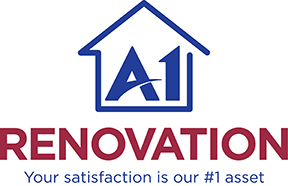Whether you’re new to the house flipping world or have been doing it for years, raising the odds that you’re making a solid investment is the most important asset you have.
If you’re just getting into the game, you may be in a position where you only have the seed capital for one property at a time, and starting off with a dud would crush your momentum before you even got off the ground. Turning a profit on your first few endeavors is make or break.
And if you’ve been doing this awhile no doubt you’ve had some disappointments along the way — properties that looked like a good buy and then had a bunch of surprise repairs or for others reasons were just tough to sell.
In this post we’re going to go over some information to help firm up your process to prevent a costly move, and even showcase a form of consulting that can save you money on every investment you make. If you want to skip straight ahead to that part, click here.
When is house flipping a bad investment?
Unless you have the capital to acquire properties yourself, you’ll probably need to finance the purchase. Interest rates are low right now in 2020, which is helpful, but as a general rule you’ll want to have an idea of how long you may need to hold onto the property before you can sell it.
For instance, do you have 6 weeks of repairs or renovations ahead of you before you can feasibly list it for sale? That may not be an issue. But if it’s more like 6 months to a year of work on it, which happens, your interest rate plays a much bigger role in profitability since you’re the one taking the hit each month until you move the property.
Another thing to bear in mind that can lead to a bad investment is having realistic expectations of selling price. For instance, if you’re acquiring a property in a neighborhood of $100,000 homes, even if you can get it for $60,000 it may not be realistic to assume you can sell the home for $180,000 after a bunch of big upgrades.
A house that falls too far outside the norm for its neighborhood can be tough to sell, and then you’re in a situation where you’ve invested in a bunch of upgrades and won’t likely get all of that money back out of the property.
How long has the property been on the market? Often if it’s been listed for over 6 months and hasn’t sold yet, you can safely assume other investors have checked it out before you. There’s a reason they didn’t move on it. While it may not be immediately clear what the reason is, take that into consideration when eyeing the property.
Is there area the property is in in a growth state? It’s not always easy to get particulars on a given property, especially if it was a rental property. The current owner may not want to share vacancy rates with you if they aren’t favorable, but you can look up those stats on apartments and other rentable properties in the same area to get an idea if it’s an area people are flocking to or not.
That will directly affect your ability to sell the property quickly or not after acquiring it.
Are the roof shingles old, or are there sections that have clearly been patched? This is a sign of something you’ll probably have to address to make the place attractive to buyers and prevent water damage. The trouble is, a fresh roof costs you money but doesn’t typically add to the value of the home, so that will end up being a straight expense you won’t get your money back out of.
It’s not necessarily a deal-breaker if there are great profit opportunities in other aspects of the property, but something to watch out for.
Common fixes you’ll need to do in house flipping:
Not all improvements involved in house flipping are fixing damage or replacing appliances. One of the more common maladies investors see are poorly designed kitchens, drawers, cabinets, etc. A glaring example of this is where one set of drawers blocks another when opened.
This is also a common mistake new flippers make: replacing cabinets and being happy that everything looks new and modern, but not paying enough attention to those sorts of details. These things will detract from the speed at which the home can be sold, and can be a waste of the money invested in the upgrades.
Loose handrails on stairs is another common one. These naturally come loose over time in some homes, or even get pulled out altogether by misuse. Not everyone understands how to properly re-secure the railing, so a lot of times previous owners will screw them back into only drywall. That’s not nearly strong enough, and makes the railing easy to pull back out.
If prospective buyers notice this during a walk through, it will be a red flag to them.
Heating systems are, sadly, one of the more neglected areas of a lot of homes. Even if the previous owner performed proper maintenance on the HVAC unit over the years, it’s an item people often ignore until there’s a problem (like a water heater). That means that even if they ideally should’ve replaced it a few years ago, they’ve continued using their old system because “it still works fine”.
Be aware of this when reviewing the property — especially if it’s an older property. It may seem to work ok now, but could pose issues before long and may need to be factored into your costs to make the property attractive to the next buyer.

